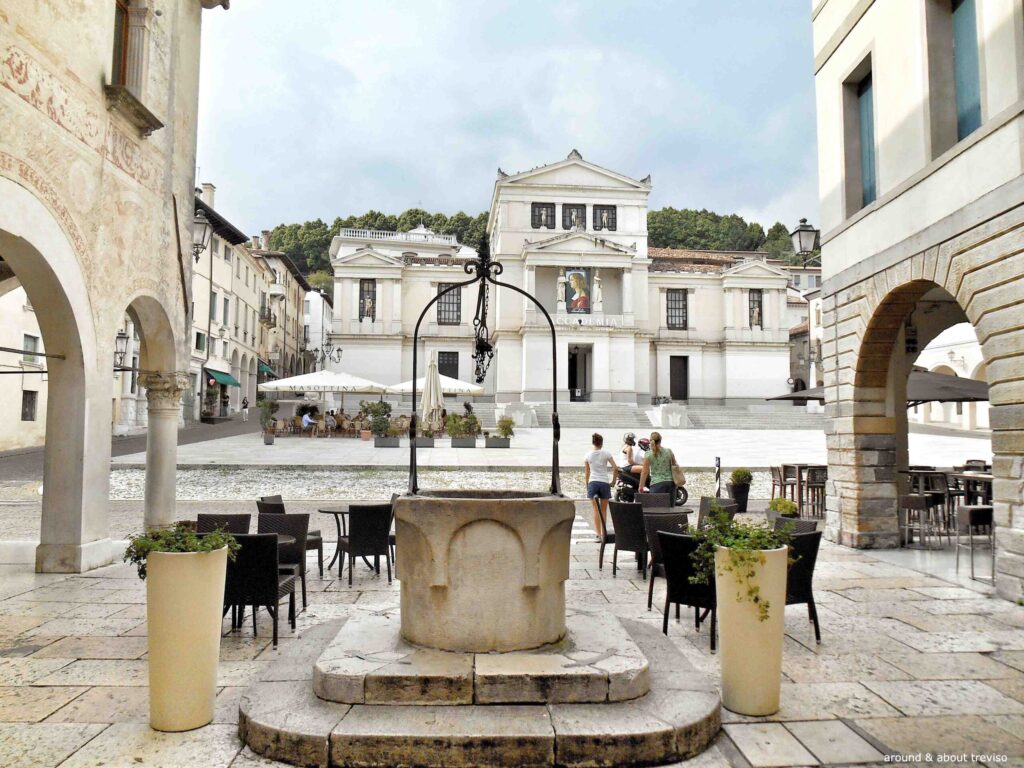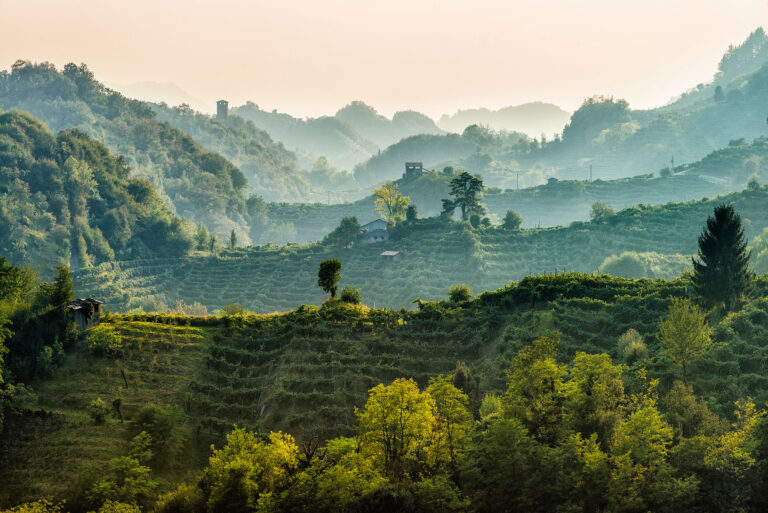Conegliano, city of Cima and Prosecco
Conegliano, also known as the ‘pearl of Veneto’, is located halfway between the mountain and the plain and a crossing point, has always been a strategic site. It is the most populous and industrious city of the Left Piave, on the Pontebbana road and on the Venice-Udine railway line with a detour to Cadore.
It has been known for centuries in Italy and around the world for the fame that its great painter Gian Battista Cima (1459-1518) gave it, as well as for the first Enological School established in Italy (1876) and for the Prosecco D.O.C.G. of its hills.
Conegliano, since the twelfth century, followed the fate of the municipality of Treviso passing from the Ezzelini to the Scaligeri, who equipped it with new fortifications, up to the Republic of Venice to which Treviso passed in 1337, and the brief parenthesis of the Carraresi (1384-1388) . During all this period the Castle was raised and the walls to defend the village were strengthened. The town was also embellished with stately and institutional buildings.
For those who see Conegliano for the first time, the Castle is its most characteristic feature. Inside there is today the Civic Museum.
The ancient Via XX Settembre (Contrada Granda) develops in the historic center of Conegliano which, with the characteristic Piazza Cima, are the heart of the city.
Contrada Granda has been the economic and cultural center of the city for centuries. The street, in addition to containing the fundamental structures of the urban fabric such as the Duomo, the Accademia Theater and the Palazzo Comunale, through a succession of architraved and archivolted structures with walls embellished with frescoes, welcomes stupendous palaces that were born gradually starting from the fifteenth century. The noblest and most powerful families competed to build the most impressive and sumptuous palace, as a tangible sign of their wealth and nobility. In 1865, on the occasion of the sixth centenary of Dante Alighieri’s birth, two turrets were built in place of the ancient Ruio gate, hence the current name of Porta Dante.
Another symbol of Conegliano is the recently restored Fountain of the Horses or Neptune. The fountain was located in the current square of 18 July 1866, at the top of the steps of the Alpine troops. I found accommodation in its current position in 1838, taking advantage of Emperor Ferdinand I Augustus of Austria’s passage through Conegliano. Some places to visit:
- Conegliano Castle
- Civic Museum
- Contrada Granda (via XX Settembre)
- Conegliano Cathedral
- Casa G.B.Cima
- former Convent of San Francesco
- Villa Gera
- House of the King of Cyprus (15th century, via Madonna)
- The fountain of Neptune
- Jewish cemetery
- Former Dominican convent (or former Marras barracks)
- Museum of the Alpini
- The churches (Santi Martino and Rosa, Sant’Orsola (XII century), Santi Rocco and Domenico (XVII century) …)
- The ‘Cerletti’ Wine School
- Coffee Museum
. …
But Conegliano also invites you to go out of town: a trip along the surrounding hills, planted with vineyards and scattered with villages of great historical and artistic interest, allows the visitor, in addition to the enjoyment of a landscape of rare beauty, of some singular monuments and spontaneous architecture. scattered along the hills, the tasting of wines and typical foods of the area.
THE CATHEDRAL AND THE CIMA PALA
The Cathedral is a very valuable building dating back to the fourteenth century; the facade is set between the buildings of the district, it is covered by the elegant ogival arched structure of the Scuola dei Battuti: on the facade of this there is a large fresco, considered the largest mural fresco in the Veneto and a book painted on the street. Both the frescoes that embellish the exterior and those of the interior (Sala dei Battuti) are by Pozzoserrato and made in the sixteenth century. Inside the Cathedral, a sober structure with three naves, it is possible to admire Cima’s only work to be preserved in his hometown: the Conegliano Altarpiece, dated 1492 and placed behind the main altar. Also noteworthy is the canvas depicting Saint Catherine baptized by the hermit of Palma the Younger, placed above the portal.
The porticoed façade is embellished with scenes from the Old Testament frescoed by Pozzoserrato at the end of the 16th century. The interior, with three naves, has been restored to its primitive Gothic aspect by a careful and well-conducted restoration.
Among the works stands out the famous altarpiece depicting the Madonna enthroned with the Child, Saints and Angels, a masterpiece by Cima da Conegliano.
The other works of the Cathedral are arranged mainly along the walls of the external naves, works by artists of undisputed fame including Francesco Beccaruzzi, Ludovico Pozzoserrato and Palma il Giovane to name a few.
The Hall of the Beaten
Directly connected to the Cathedral is the Sala dei Battuti, born as a meeting place for the religious Confraternity. The room dates back to the fourteenth century, subsequently restored: it is adorned with the splendid frescoes by Francesco da Milano, Jacopo Pozzoserrato and a part attributed to Girolamo da Treviso, depicting Scenes from the Old and New Testament (16th century).




